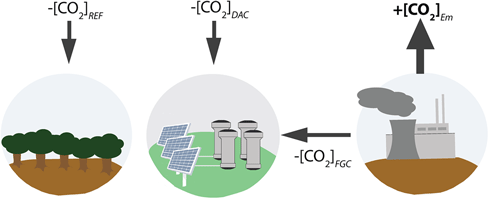Article contents
Comparison of carbon sequestration efficacy between artificial photosynthetic carbon dioxide conversion and timberland reforestation
Published online by Cambridge University Press: 25 September 2020
Abstract

A comparison between electrochemical carbon dioxide conversion and reforestation is presented. By comparing thermodynamic and forestry data, recommendations for technology development can be made.
With the global average temperature steadily increasing due to anthropogenic emission of greenhouse gases into the atmosphere, there has been increasing interest worldwide in new technologies for carbon capture, utilization, and storage (CCUS). This coincides with the decrease in cost of deployment of intermittent renewable electricity sources, specifically solar energy, necessitating development of new methods for energy storage. Carbon dioxide conversion technologies driven by photovoltaics aim to address both these needs. To adequately contribute to greenhouse gas reduction, the carbon dioxide conversion technology deployed should have a substantially higher rate of carbon dioxide removal than planting an equivalent-sized forest. Using consistent methodologies, we analyze the effectiveness of model photovoltaic-driven carbon dioxide conversion technologies that produce liquid alcohols as compared to planting an equivalent forest. This analysis serves to establish an energy use boundary for carbon dioxide conversion technology, in order to be a viable alternative as a net carbon negative technology.
Keywords
- Type
- Original Research
- Information
- Copyright
- Copyright © The Authors, 2020, published on behalf of Materials Research Society by Cambridge University Press
References
- 6
- Cited by



